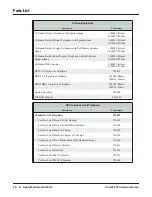
143
MDW 9031/9031DCP Wireless Pocket Phone Installation and Use
503-801-166 — Issue 3 — October 1999
B
Regulatory Information
This appendix contains information about the Federal Communications Commission and Industry Canada.
FCC Part 15 Rules
The Lucent Technologies MDW 9031/9031DCP Wireless Pocket Phone has been tested and has been found to
comply with FCC Part 15 Rules. These specifications are designed to provide reasonable protection against
harmful interference in a commercial or residential installation. This wireless telephone generates, uses, and can
radiate radio frequency energy and, if not installed and used in accordance with the instructions, may cause
harmful interference to radio communications. However, there is no guarantee that interference will not occur in
a particular installation. If the telephone does cause harmful interference to radio or television reception, which
can be determined by turning the telephone off and on, the user is encouraged to try to correct the interference by
one or more of the following measures:
•
Where it can be done safely, reorient the receiving television or radio antenna.
•
To the extent possible, relocate the television, radio, or other receiver with respect
to the telephone.
•
Plug the telephone into an electrical outlet that is not on the same circuit as one
used by the radio or television.
IC RSS-210 Compliance
This device complies with RSS-210 of Industry Canada. Operation is subject to the following two conditions:
•
This device may not cause interference.
•
This device must accept any interference including interference that may cause
undesirable operation of the device.
Hearing Aid Compatibility
This wireless telephone is compatible with inductively coupled hearing aids.
The user is cautioned that modifications to this telephone, not expressly approved by Lucent Technologies,
could void the user’s authority to operate the equipment.
Summary of Contents for TransTalk 9000
Page 161: ......












































